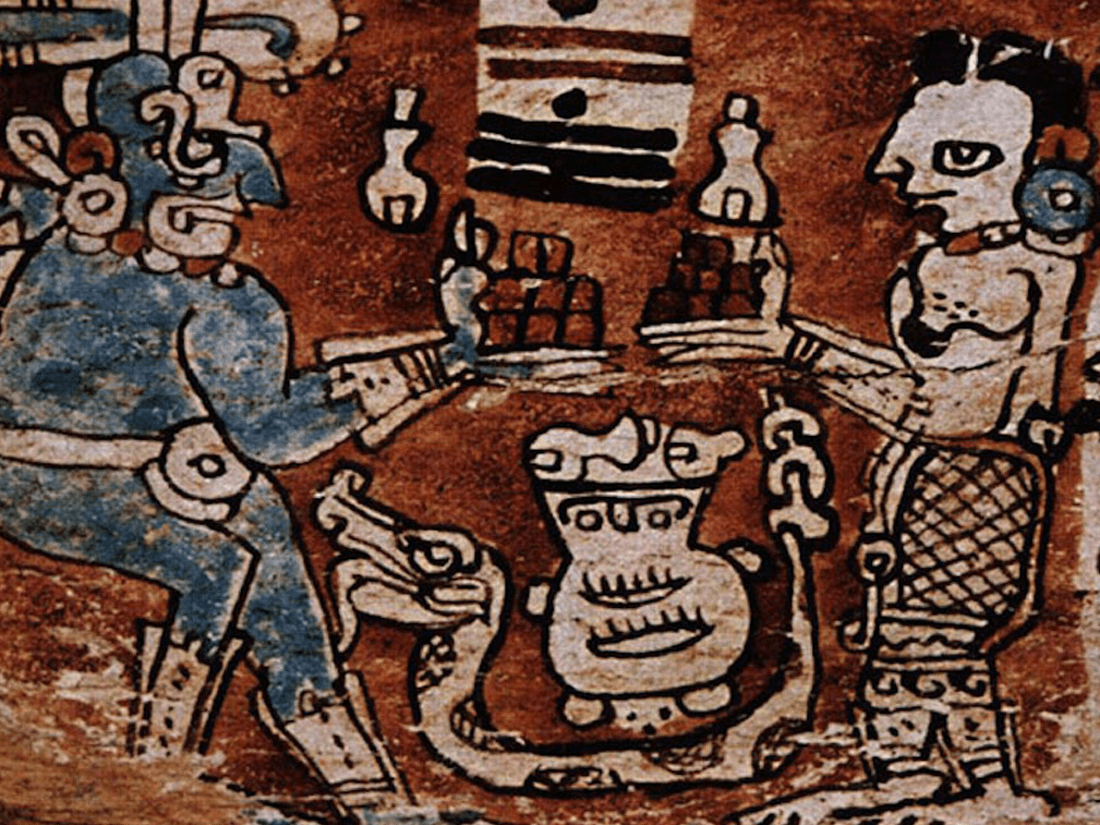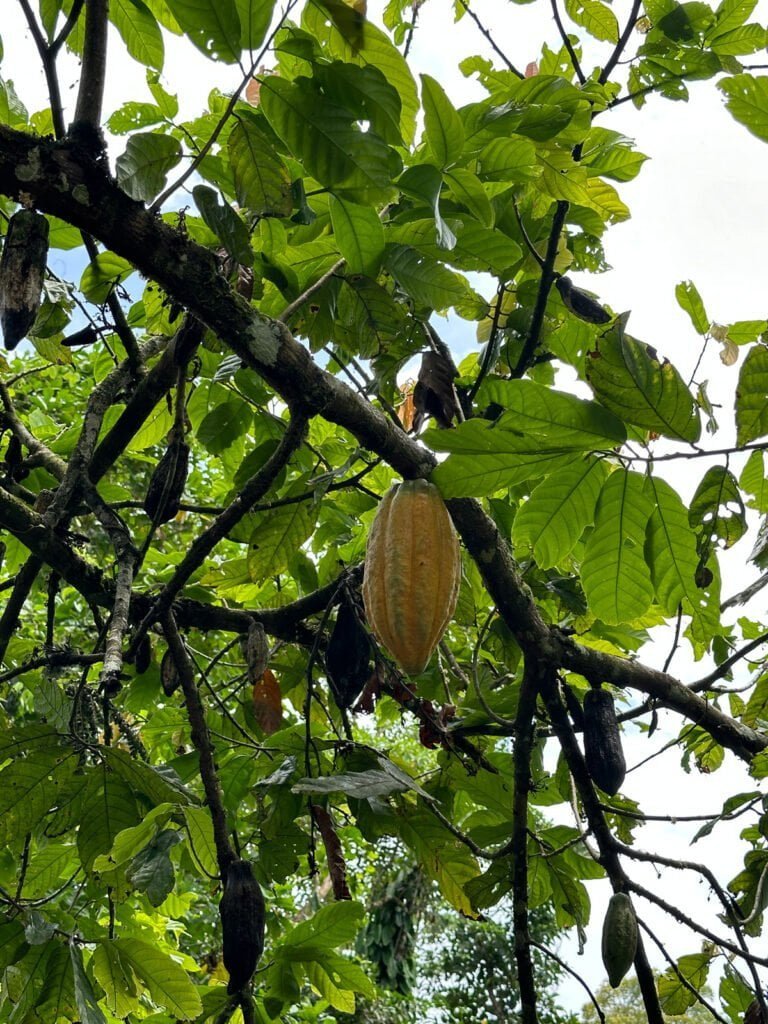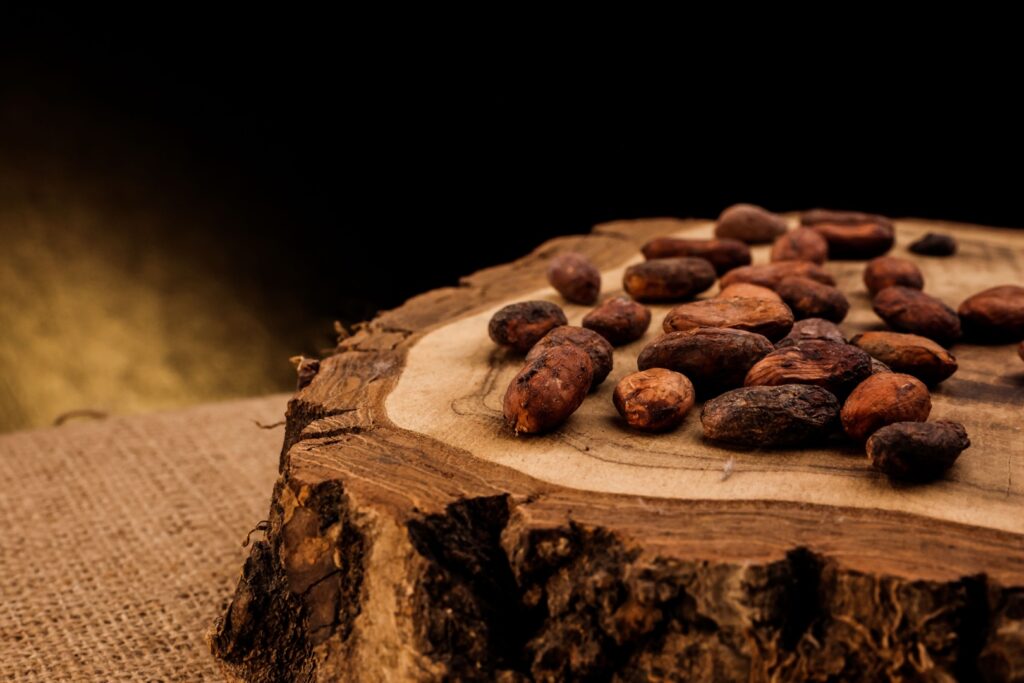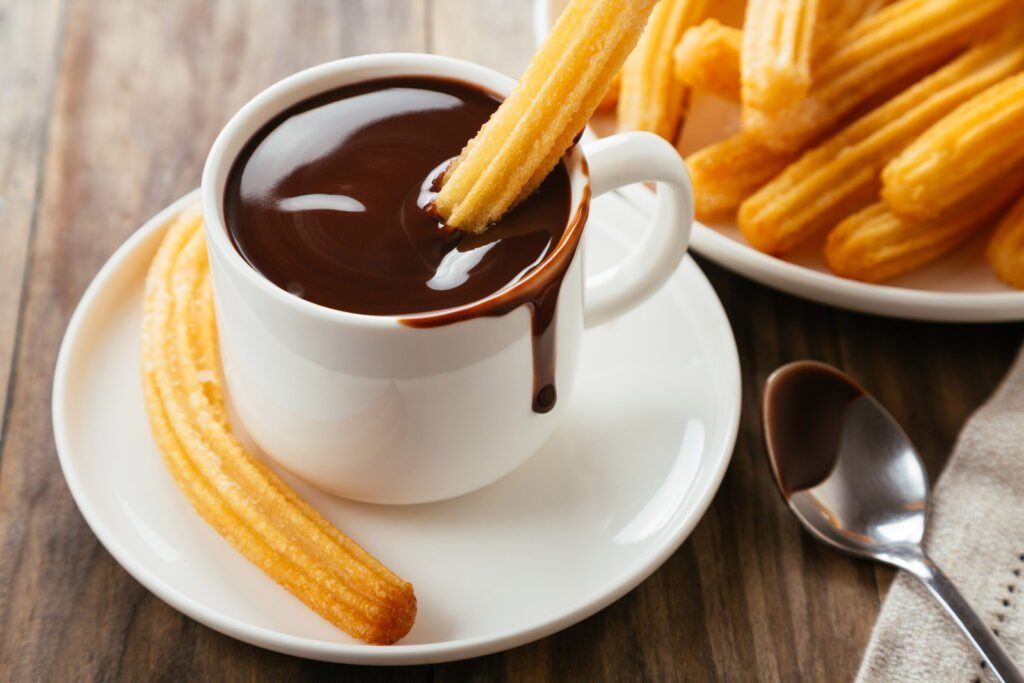The history of cacao

Featured products Learn more about our offer
View allDid you know that its cacao history is already 7,500 years old?
Cacao trees have put down their roots in more than one culture. The history of chocolate dates back to the ancient Mayans and even their Olmec ancestors. It is not known when exactly cacao appeared or who invented it. According to a 2018 study published in Nature, the oldest known traces of cacao use date back to 5450 – 5300 BC from excavations in southern Ecuador. The team of scientists, led by Sonia Zarrillo, conducted research, among other things, examining the remains of ceramic vessels in which particles of theobromine contained in cacao beans, were found absorbed. It is believed that the Olmecs used grated cacao beans along with chilli peppers and herbs to make a festive drink [1]. The Mayans and Aztecs treated cacao as a symbol of abundance and a gift from the gods. Mayan written history mentions chocolate drinks used during celebrations and finalizing important transactions. Chocolate drinks were used daily. Mayan chocolate was thick and foamy, often combined with chilli peppers, corn flour or honey. A similar practice in consumption suggests that it was the Olmecs who passed on knowledge of chocolate to the Maya. The Maya gathered once a year to thank their god Ek Chuah, whom they considered the god of cacao [1].


Cacao fruit in Ecuador
Cacao beans as a gift from the gods.
The Aztecs related to cacao beans with even greater reverence. In Aztec culture, cacao beans were considered more valuable than gold. They used grains as currency to buy food and other goods. As a consumable product, it was mainly an upper-class extravagance; the lower classes occasionally consumed cacao at weddings or other celebrations. Perhaps the most famous Aztec chocolate lover was the powerful ruler Moctezuma II, who reportedly drank large amounts of chocolate every day as a source of energy and an aphrodisiac [3]. It is also said that he reserved some of the cacao beans for his army. The Aztecs believed they owed cacao to the god Quetzacoatl, whom they believed condemned the other gods for sharing chocolate with humans. [4]


The origins of the chocolate craze in Europe.
There are many legends about how cacao got to Europe. It was eventually agreed that it first arrived in Spain through Christopher Columbus, who discovered the cacao beans after intercepting a merchant ship on a voyage to America and brought them with him to Spain in 1502 [5]. There is also a legend about the Spanish conquistador Hernan Cortes. Moctezuma himself is said to have treated him to chocolate [3], which he then took to Europe. Regardless of how chocolate arrived in Spain, by the end of the 16th century, it was already beloved by the Spanish people. Soon the fondness for chocolate spread throughout Europe. The response to high demand was plantations operated by thousands of slaves. At first, Europeans were not satisfied with the taste of traditional chocolate, so they stared experimenting [3]. They created their own blends of chocolate with cane sugar, cinnamon and other popular spices.
Religion v. Cacao.
Another barrier to chocolate was the approach of the world at the time to religion [6]. Including fasting, which was celebrated much more strictly than today. With the advent of the novelty of chocolate. The Church had to decide whether chocolate is a food, and therefore its consumption breaks the fast, or whether it is a drink since it only serves to quench thirst and does not break the prohibitions. Both sides have gained their supporters. Ultimately, the church decided that eating chocolate does not break the fast. Pious Europeans were able to indulge in the benefits of chocolate on fast days as well. It’s funny that years later, chocolate Santas and bunnies have become secular symbols of religious holidays.
The bitter taste of real chocolate.
The word “chocolate” may be associated with sweet candies or luscious cakes like the American “Brownie”. For most of history, however, chocolate was a respected but bitter food. In the late 18th century, Europeans began preparing chocolate with milk and sugar to create what we know today as hot chocolate. The drink has become so popular that many leading European porcelain manufacturers, such as Limoges in France, have begun producing specialized “chocolatier” pots and cups designed specifically for serving chocolate [7]. Many chocolate products considered traditional today have been developed in Europe. For example, the famous Belgian truffles deserve a mention. These are chocolates with a filling of melted chocolate and champagne-spiced cream, surrounded by unsweetened cacao powder.


Chocolate in the global market.
Dutch Coenraad chemist Johannes van Houten did the most to popularize chocolate. In 1828, he discovered a novel method of processing cacao beans and invented the cacao press [8]. The press made chocolate available to everyone on an unprecedented scale. Less than 50 years later in 1876, Swiss chocolatier Daniel Peter created the first milk chocolate. A few years later, with his friend Henri Nestlé, they created the still-famous Nestle Company and brought milk chocolate to the mass market. Today, there is practically no area of life where chocolate is not present, in one way or another. Chocolate museums are springing up all over the world. Today, chocolate can be the colour of paint, navy or the flavour of ice cream. The world has fallen in love with chocolate. Unfortunately, most modern chocolates are mass-produced and have little in common with the Aztec “food of the gods.” Also in terms of the nutritional properties of cacao . Nonetheless, there are still chocolatiers who follow age-old recipes and use the strictest ingredients available. With a little willingness, we still have the opportunity to feel the indigenous, earthy flavour that Indians enjoyed more than 7,000 years ago.
